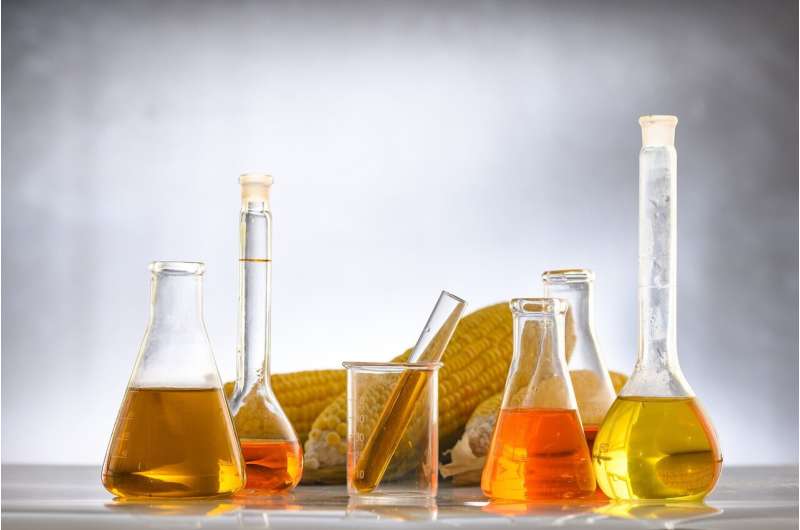Producing kerosene from bio-based side streams

Wageningen University & Research and its partners have developed a new type of aviation fuel that is produced using bio-based waste streams from the agriculture industry.
One of the targets of the Renewable Energy Directive II (RED II) is to increase the use of advanced biofuels in the transport sector, to a minimum of 3.5% of the total biofuel consumption in the EU. Advanced biofuels are fuels that are produced from sustainable biomass and have significantly lower GHG (greenhouse gas) emissions than fossil fuels. The new type of fuel is based on a mixture of acetone and alcohol. While it does not yet meet all requirements, it is getting close. The expectation is that, after some processing steps have been optimized, it will meet all the applicable conditions.
New value chains
Locally produced waste streams from the agriculture or food sector can be used as raw materials in the production of advanced biofuels if they meet stringent sustainability conditions. The BioJet Fuel project is evaluating the complete value and production chains of biofuels from wet organic waste streams for the aviation sector (sustainable aviation fuel, or SAF). The results of this project could represent the first step in the creation of new value chains in the Netherlands, in which biomass and waste streams with a high moisture content from the primary agriculture and food industry are used as raw materials for bioproceses for advanced liquid biofuels.
Cheap waste streams
The raw materials used as model in this project are residual streams from the processing of potatoes. These streams were used as a raw material for the fermentative production of acetone, butanol and ethanol (ABE fermentation). While the composition of the waste streams makes them suitable for fermentation, they are currently used for low-value applications.
Technically feasible
In the approach taken in this project, the mixture of ABE that is produced from the substrate is catalytically converted into hydrocarbons and, after hydrogenation and fractionation, into aviation fuel. Through experimental research, the complete production and value chains for the conversion of wet agricultural waste streams into fuel have been shown to be technically feasible. A techno-economic assessment and a life cycle analysis (LCA) of the value chain have also been carried out.
The feedstock in this project is potato waste streams, which are currently sold as low-value cattle feed, or are converted through anaerobic digestion into methane. However, a commercial process will also require additional feedstocks, to achieve sufficient volume. Possible feedstocks that meet the criteria of Annex IX of the RED are lignocellulosic biomass and waste streams from the paper industry.
No comments:
Post a Comment